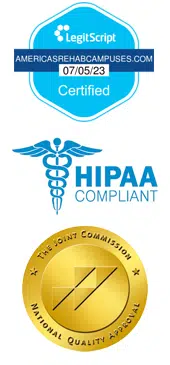Intensive outpatient treatment allows those with substance use disorders to receive the treatment they need without disrupting their school, work, or home life. If you are thinking about outpatient care to continue your recovery after detox, you might wonder about the history of this unique treatment option in Arizona. The staff had America’s Rehab Campus has put together this timeline to help you understand how the treatment of substance use disorders has evolved over time.
Intensive Outpatient Treatment, Where It Began
In 1784, a physician named Benjamin Rush argued for the treatment of alcoholism as a disease. Rush thought it was important to warn the public about the dangers of consuming too much alcohol. He also pointed out the public health problem presented by alcoholism. His books spread awareness of this important social issue. Ultimately, Rush was one of the pioneers of early addiction treatment programs.
First Drug and Alcohol Rehab Programs
One of the first rehab facilities opened its doors in 1857 and was called Lodging Homes and Homes for the Fallen. The facility provided short-term stays to allow non-medical detox from alcohol. It also offered classes to introduce clients to others fighting for their sobriety. Unfortunately, treatment methods were still primitive and reputed to be based on treatment in insane asylums.
To add to the colorful history of outpatient treatment, psychiatrist Dr. Sigmund Freud believed that cocaine was the perfect remedy for alcohol and morphine addiction. He was so enamored with the drug that he began to use it himself!
Narcotics Farms and Alcoholics Anonymous Form
Two major developments happened in 1935, the federal government opened a narcotics farm and Alcoholics Anonymous was formed. The farm was based in Lexington, Kentucky, and served as a center for research and treatment of narcotics. Meanwhile, AA was founded by former alcoholics who wanted a support system to abstain from using alcohol. The group based its philosophy on the Christian faith and created the 12 steps, which are still highly influential in alcohol and drug rehab programs today.
Industry Changes
As the 20th century wore on, the medical community realized the importance of mental and physical care during the treatment of substance use disorders. Policymakers and industry experts began to look at different ways to treat alcoholism and drug addiction. During the 1960s and 1970s, several innovations developed into what would become partial hospitalization programs, outpatient programs and inpatient programs for those with substance use disorders. The stigma associated with addiction began to recede as public awareness and education became more prevalent.
For example, in 1964, doctors developed methadone as one of the first medications designed to treat addiction. The Betty Ford Clinic, founded 1982, was promoted by former first lady Betty Ford who sought treatment for alcohol and pain pill addiction. This opened the door for those who wanted to get help but feared the public humiliation associated with addiction.
Developments in Outpatient Treatment in the Last 20 Years
Today, outpatient treatment continues to be based on counseling, faith and medical intervention when needed. In 2002, the FDA approved a drug to treat opioid addiction. Afterward, buprenorphine became more widely used in outpatient-based programs.
The Mental Health Parity and Addiction Equity Act (MHPAEA) of 2008 required health plans to cover treatment for mental health and substance disorders. This legitimized the treatment of substance use disorders as diseases. In 2010, the Affordable Care Act (ACA) expanded coverage for drug and alcohol rehab, including outpatient services.
Would you like to learn more about your outpatient treatment options in Arizona? Contact America’s Rehab Campus to learn more about our innovative programs and to find out about the latest treatment plans available to help you begin your recovery.


